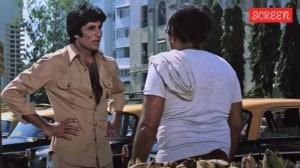Vishwamitri project: Standing Committee rejects Municipal Commissioner’s choice, directs re-tendering at half the price
Standing Committee Chairman Mistry said, “We have returned the proposal for the Vishwamitri project for re-tendering, so that it is done on the basis of the tenders of the Water Resources Department, as we want to be transparent and maintain uniformity."
 VMC’s plan of desilting and dredging of Vishwamitri river is aimed at mitigating flood risk by almost 51%.
VMC’s plan of desilting and dredging of Vishwamitri river is aimed at mitigating flood risk by almost 51%.The 100-day plan of the Vadodara Municipal Corporation (VMC) to complete the desilting and dredging of the Vishwamitri river within the city limits to mitigate flood risk by “almost 51%” suffered a minor jolt Friday as the Standing Committee rejected the present proposal of the Municipal Commissioner to award the contract to M/s Shivalaya Infra Projects Limited for `71.03 crore.
Even as the Special General Board convened Friday granted “in-principle approval” to the project, the Standing Committee that met in the evening sought “re-tendering” based on the tenders issued by the Narmada, Water Resources, Water Supply and Kalpsar Department for a similar length of the river outside the city limits, estimated to be of around `40 crore.
Standing Committee Chairman Dr Sheetal Mistry Friday said that the proposal put forth by the Municipal Commissioner to award the contract to M/s Shivalaya Infra at a cost of `71.03 crore, which was 20.80% higher than the estimated budget of `58.80 crore, had been turned down with the recommendation for re-tender of the same on the lines of the Water Resources Department.
Mistry said, “We have returned the proposal for the Vishwamitri project for re-tendering, so that it is done on the basis of the tenders of the Water Resources Department, as we want to be transparent and maintain uniformity. Although one can argue how the VMC tender has a higher estimate, the fact is that the calculating cost per cubic meter will eventually involve calculating how much waste has been removed and can escalate costs. Our tender conditions were also harsher where we asked the contractor to complete the work in 100 days by deploying extra machinery along with manpower and compulsory supervision. We also made it mandatory to videograph and photograph the work by the contractor to receive payment.”
Mistry added that the VMC will now “follow” the tender of the Water Resources department. “We have decided to create four sections of the entire stretch of equal volume and to call in bids on the basis of the volume (cumecs) of water waste. Similarly, the proposal to grant a contract for the resectioning of the kaans (storm water drains) network has also been sent back for retendering on the basis of volume (cumecs). We will retain some conditions such as the videography and photography; also, in the VMC tender, the waste is to be transported away from the riverbank, which involves cost of transportation.”
The VMC, on January 21, had put forth two proposals before the Standing Committee for the desilting of the Vishwamitri as well as resectioning and desilting of the kaans around the city as part of the flood mitigation plan to be undertaken ahead of the monsoon to mitigate the August 2024-kind devastating floods. However, the tenders of the VMC had stirred a controversy as the amounts were calculated on the basis of hourly work put in by the contractor, taking the cost of hiring the machinery for the 24 kilometre stretch of Vishwamitri to `71 crore and `31.40 crore for the resectioning of the kaans on a similar basis.
On January 22, the Water Resources department also issued six tenders — sectioning the approximately 24-km stretch of the Vishwamitri River outside the jurisdiction of Vadodara city — for “clearing, resectioning, desilting” and related works of the project.
While one of the six tenders is of `5.3 crore, five others are estimated to be of `7.2 crore. The tenders of the Water Resources department also include the cost of the contractor constructing temporary motorable service road throughout the section, including dewatering the same as per the recommendation of the State Environment Impact Assessment Committee. The tender also includes clearing outer and inner slopes of canal banks by cutting jungles, removing vegetation as well as burning or carrying away the water as required. The main work is of excavation of river silt “in uniform layers” by digging to the bed level and gradient, earth work of embankment using excavated soil, deepening of river along the entire section and channelising water way. The cost for the entire activity has been calculated on the basis of volume (in cumecs), before arriving at the costs for the tender that will close on February 5.
In contrast, the VMC had issued tenders for similar scope of work for the similar length of the river intersecting through the city limits as well as the kaans network by calculating the costs for the machinery on per-hour basis, causing much opposition from within the ruling party.
A leader of the BJP told this newspaper, “The price bid listing of the VMC was drawn on the per-hour basis which estimated the cost of hiring a single hydraulic excavator at `2,559 per hour, amounting to an estimated cost of `7.6 crore, which is more than the cost of one entire section of the Water Resources department. In fact, the cost is higher than the rent paid for simple road work by the VMC… The cost of unskilled labour, for instance, was calculated at `452 per hour, amounting to an estimated `1.3 crore. According to the ‘Bill of Quantities’ of the VMC’s proposal, the cost of hiring dumper trucks on a per-hour basis of `1,362 has been calculated to be `27.24 crore while the Water Resources department defines the scope of work as “inclusive of machinery”.
The leader added, “Also sectioning the river means that there can be more than one contractor working on the project as against the contract being awarded to a single entity.”
The VMC, which has received clearance from the SEIAA is awaiting the response of the PCCF (Wildlife) to also take on relocation of crocodiles from the river, if necessary, during the process.”
Mistry added that the VMC would seek permission from the Mines and Minerals department to give away the extracted soil from the riverbed as it is rich in carbon content and can be used as fertiliser. “To dispose of the soil excavated, we can consider giving it away to interested parties after seeking due approval from the department concerned as alluvial soil with carbon content is seen as a minor mineral,” he said.
A senior VMC official told this newspaper Friday, “The retendering means that the project would take at least a month to start as the tendering would be done as per the stipulated provisions and thereafter it has to be sent to the Standing Committee for approval and finally to the General Board before the work can commence.”
Earlier on Friday afternoon, the Special General Board convened to “apprise the elected representatives” and also “seek suggestions” approved the project “in-principle” after Rana presented the action plan to the elected representatives, emphasising on the need to also rejuvenate and restore the network of water channels around the Vishwamitri River.











